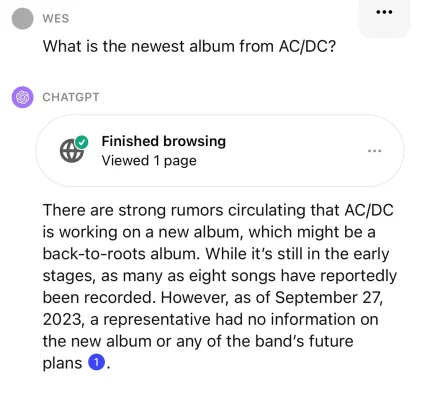The days when one catchy slogan was enough for a nationwide ad campaign are long gone. To win in 2025, brands need to deliver nuanced messaging tailor-made for unique customer subsets.
That’s where localized marketing comes in. According to Locality and The Harris Poll, over 70% of Americans expect advertising messages to be localized, and more than 50% are more likely to buy from a brand that’s advertising locally.
Local advertising is especially key for franchise businesses, which often have to advertise across many different areas and demographics, nationwide or globally. But franchises also face specific challenges that make creating a cohesive yet individualized message that fits each franchisee uniquely difficult.
By breaking campaigns down into specific, personalized messages for different locations based on factors like climate, current events in the area, and more, brands can address local needs and increase their odds of success with customers in each market.
How franchise brands can leverage local advertising to boost regional visibility
Location-based advertising might have a lot of benefits, but for many brands, localized campaigns can be a challenge to pull off. For them to work, marketers need to optimize their budget, measurement, creative, and more to reach a range of unique markets.
Earmark budget for regional markets
Before you can start any marketing campaign, you need to make sure you have the money to back it up (and the right strategy to deploy that spend). A generalized national media budget can’t account for the individual needs of different markets.
For franchises looking to advertise to specific markets, it will be crucial to break your national media budgets down into different regions to make sure your spend is going to the right places for each area.
When Wpromote worked with Jiffy Lube to develop specialized offers for different franchise locations, the brand divided its national media budget into six different areas across the US. With funds allocated to each place, the team was then able to provide nuanced messaging for these areas based on the factors that were most important to customers in those regions.
Implement integrated reporting to eliminate redundant spend
Reporting is also a key factor: to win across different regions, you need to have a strong measurement framework in place so you can understand performance in each area.
To do that, franchises need to break down the walls between locations and channels so they can pull all their data into one place. Integrated reporting can show you which creative works for different audiences, so you can lean into the most effective messaging for each place.
Unfortunately, many franchises don’t have the reporting tools to achieve this. According to a Constant Contact survey, only 38% of franchisors report having complete visibility into their franchisees’ marketing and communications programs, and just 37% of franchisors surveyed say their tools are very effective at helping them track marketing performance.
So, how can franchises get the insights they need to succeed both locally and nationwide?
It starts with gathering the right data for customers in each area, including:
- Behavioral: website visits and browsing history
- Demographic: age, gender, location
- Transaction: past purchases and average spend
- Engagement: shares and comments on social media
One tactic is building an integrated framework with metrics from different franchisees, then incorporating that information into a media mix model like Wpromote’s Polaris Growth Planner to truly understand marketing’s impact.
This isn’t a one-and-done process: once you have personalized experiences in place, you will also need to keep track of results and continuously adjust and improve your marketing based on new insights as you go.
Build agile personas for specific areas
While overall audience insights are great for general market research, a persona-based approach can help marketers understand how different activations might work for subsections of that audience.
That’s easier said than done: Since they require a lot of research, traditionally, personas often rely on older quantitative and qualitative insights about an audience. Out-of-date personas can end up doing more harm than good by encouraging incorrect assumptions about your audience.
Only updating personas annually or quarterly puts your brand at risk of leaving the most relevant information on your audience’s media consumption, interests, and motivations on the table.
Luckily, generative AI tools can help you keep your personas up to date in between those large-scale updates. Tools like ChatGPT and Bard can bring in new information like customer sentiment, seasonal changes, and more to refresh your personas quickly and efficiently.

Source: The Verge
Use AI to amplify and scale localized campaigns
Once you have the data and budget to back it up, you’re ready to implement a localized strategy. AI can help you scale those efforts.
With AI tools, brands can create hyper-personalized experiences, ads, and recommendations based on real-time data and factors like season or time of day, location, and weather.

Rainy Version: “When it rains, Frappé cheers you up.” Source: Smartly

Sunny Version: “Frappé is a part of summer.” Source: Smartly
Generative AI can help marketers dynamically update ad messaging and visuals in real time to account for changing circumstances in different markets.
A tool like Smartly can update ads automatically by adding different text over images or changing visuals to personalize them for different users. Instead of manually changing assets, you can use the same creative across all variations while AI does the work for you.
For example, a hotel brand could set ads to change backgrounds based on region, so the Eiffel Tower appears in an ad for a Paris property, while a London hotel shows Big Ben.
Getting started with local advertising
Ready to give more localized marketing a try?
To get started:
- Take inventory of your current measurement capabilities and consider what new data or tools you’ll need for localized campaigns
- Think about specific needs your audience might have in different markets, and what factors are the most important for your brand’s product or service
- Kick off small, specific tests of local ads so you can see what works before expanding your efforts further
- Try out AI tools to help scale campaigns more efficiently
It can be daunting to get started with local marketing. But if you do it right, making sure customers across different markets feel seen and heard will pay dividends for your brand in the long run.







Responses